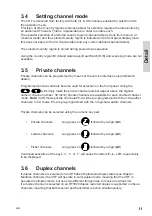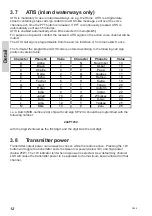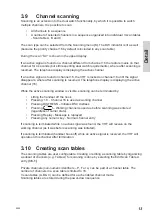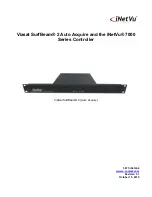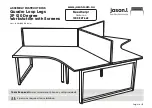
Training Information
The Thrane & Thrane RT5022/RT5020 VHF radio is designed for “occupational use only”
and is also classified as such.
It must only be used in the course of employment by individuals aware of both the hazards
as well as the way to minimize those hazards.
The radio is thus NOT intended for use in an uncontrolled environment by general public.
The RT5022/RT5020 has been tested and complies with the FCC RF exposure limits for
“Occupational Use Only”. The radio also complies with the following guidelines and
standards regarding RF energy and electromagnetic energy levels including the
recommended levels for human exposure:
•
FCC OET Bulletin 65 Supplement C, evaluating compliance with FCC guidelines for
human exposure to radio frequency electromagnetic fields
•
American National Standards Institute (C95.1) IEEE standard for safety levels with
respect to human exposure to radio frequency electromagnetic fields, 3 kHz to 300 GHz
•
American National Standards Institute (C95.3) IEEE recommended practice for the
measurement of potentially hazardous electromagnetic fields – RF and microwaves
Below the RF exposure hazards and instructions in safe operation of the radio within the
FCC RF exposure limits established for it are described.
Warning:
Your Thrane & Thrane radio set generates electromagnetic RF (radio frequency) energy
when it is transmitting. To ensure that you and those around you are not exposed to
excessive amounts of that energy (beyond FCC allowable limits for occupational use) and
thus to avoid health hazards from excessive exposure to RF energy, FCC OET bulletin 65
establishes an Maximum Permissible Exposure (MPE) radius of 3” (0.9m) for the maximum
power of your radio (25W selected) with an half wave omni-directional antenna having a
maximum gain of 3 dB (5.2dBi). This means all persons must be at least 3” (0.9m) away from
the antenna when the radio is transmitting.
Installation:
1.
An omni-directional antenna with a maximum power gain of 5.2 dBi must be mounted at
least 9.6” (2.9m) above the highest deck where people may be staying during radio
transmissions. The distance is to be measured vertically from the lowest point of the
antenna. This provides the minimum separation distance which is in compliance with RF
exposure requirements and is based on the MPE radius of 3” (0,9m) plus the 6.6” (2m)
height of an adult.
2.
On vessels that cannot fulfil requirements in item 1, the antenna must be mounted so
that its lowest point is at least 3” (0.9m) vertically above the heads of people on deck and
all persons must be outside the 3” (0.9m) MPE radius during radio transmission.
•
Always mount the antenna at least 3” (0.9m) from possible human access
•
Never touch the antenna when transmitting
•
Use only authorized T&T accessories
3.
If antenna has to be placed in public areas or near people with no awareness of the radio
transmission, the antenna must be placed at a distance not less than 6” (1.8m) from
possible human access.
Failure to observe any of these warnings may cause you or other people to exceed FCC RF
exposure limits or create other dangerous conditions.
ii
0611
Summary of Contents for RT5020 VHF DSC Duplex
Page 1: ...SAILOR RT5022 VHF DSC SAILOR RT5020 VHF DSC Duplex OPERATION MANUAL ...
Page 2: ......
Page 67: ......
Page 68: ...Thrane Thrane A S info thrane com www thrane com ...

















